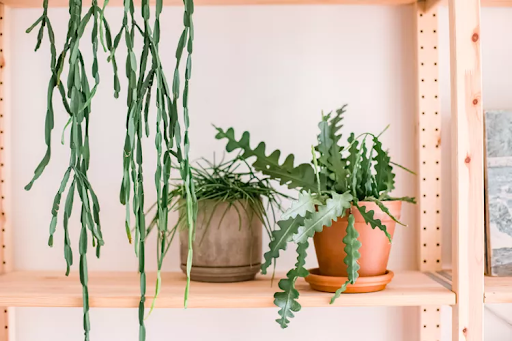When we think of cacti, the image that often comes to mind is that of a spiky desert dweller, thriving in arid conditions. However, there’s a fascinating group of cacti that defies this stereotype – Rhipsalis. These epiphytic cacti hail from the rainforests of Central and South America, and they’ve adapted to a very different way of life. In this ultimate guide, we will delve into the unique world of Rhipsalis and explore how to care for these captivating and low-maintenance houseplants.
The Fascinating World of Rhipsalis
Rhipsalis is a genus of approximately 35 different species, and they have some remarkable characteristics that set them apart from other cacti. What makes Rhipsalis truly intriguing is their epiphytic nature. Unlike their desert-dwelling relatives, Rhipsalis cacti are typically found in tropical and subtropical forests, where they grow on trees or other vegetation. They are true jungle cacti, making them a perfect choice for those looking to add a touch of the rainforest to their homes.
Rhipsalis’ Unique Care Requirements
Caring for Rhipsalis is a delightful experience, primarily because these cacti have adapted to lower light conditions compared to desert cacti. Here’s a comprehensive guide to help you keep your Rhipsalis thriving.
-
Light
Rhipsalis thrives in bright, indirect light, making them ideal for homes with limited sunlight. They can even tolerate some dappled shade. Avoid exposing them to direct, harsh sunlight, as this can scorch their leaves.
-
Water
One of the reasons Rhipsalis is a popular houseplant is its low-maintenance watering requirements. Allow the soil to dry out slightly between waterings, but never let it become bone dry. Water sparingly in the winter months. Overwatering is the most common mistake, so be mindful of this to prevent root rot.
-
Soil
Rhipsalis prefers a well-draining, slightly acidic soil mix. A combination of potting soil and orchid bark or perlite works well. Make sure the container drains well to avoid rotting roots.
-
Humidity
Given their tropical origins, Rhipsalis appreciates higher humidity levels. To mimic their natural habitat, consider misting your plants or placing a tray of water nearby.
-
Temperature
Maintain temperatures between 60°F to 70°F (15°C to 24°C). They can tolerate occasional dips in temperature, but avoid exposing them to frost or extreme heat.
-
Fertilization
During the growing season (spring and summer), feed your Rhipsalis with a balanced, diluted cactus or houseplant fertilizer every 4-6 weeks. Avoid fertilizing in the dormant months.
-
Propagation
Rhipsalis can be propagated from stem cuttings. Take a cutting, allow it to callus for a day or two, and then plant it in a well-draining potting mix. Keep the cutting slightly moist, and it should root within a few weeks.
Rhipsalis: A Natural Air Purifier
Aside from their unique care requirements, Rhipsalis also offers excellent air-purifying qualities. Like other plants, they can help remove toxins from the air, improving the overall air quality in your home. In addition to their aesthetic appeal, Rhipsalis can contribute to a healthier living environment.
Anthuriums: A Perfect Companion for Rhipsalis
Now, let’s talk about anthuriums. Anthuriums, also known as “laceleaf” or “flamingo flower,” are another tropical houseplant that pairs wonderfully with Rhipsalis. Their glossy, heart-shaped leaves and vibrant, long-lasting flowers create a striking contrast to the delicate, trailing stems of Rhipsalis. Both plants thrive in similar conditions, making them compatible housemates in your indoor jungle.
-
Conclusion
Rhipsalis is a unique and captivating addition to any indoor garden. Their epiphytic nature, low-maintenance care requirements, and air-purifying qualities make them a top choice for plant enthusiasts. And when you pair them with anthuriums, you create a stunning tropical oasis in your home. So, go ahead and embrace the lush beauty of Rhipsalis and its companion, anthuriums, for a truly remarkable indoor gardening experience. These plants will not only brighten up your living space but also provide a touch of the rainforest right at your doorstep. Happy gardening!


